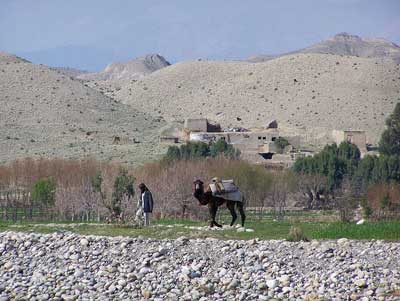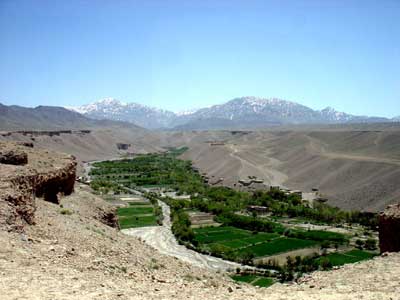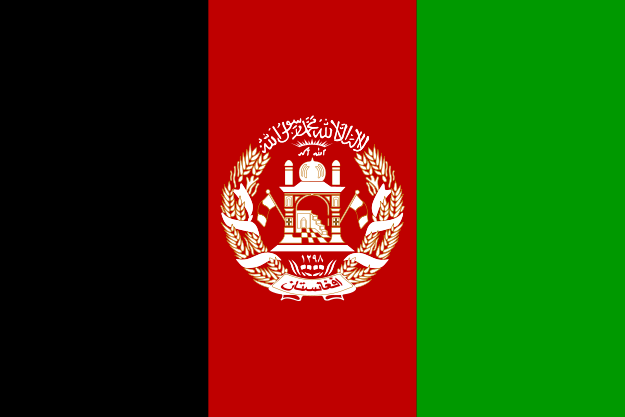 Kayum sometimes accompanied me to shop for food and taught me how to haggle over prices. There was one stall that sold chile peppers hanging on long strings like ristras. We bought these, cucumbers, and other vegetables as they appeared. A few other foods were available seasonally, including peaches, apples, pears, plums, and grapes. There were small vegetable gardens in some places, and every so often I saw chile peppers being grown.
Kayum sometimes accompanied me to shop for food and taught me how to haggle over prices. There was one stall that sold chile peppers hanging on long strings like ristras. We bought these, cucumbers, and other vegetables as they appeared. A few other foods were available seasonally, including peaches, apples, pears, plums, and grapes. There were small vegetable gardens in some places, and every so often I saw chile peppers being grown.
Kayum soon learned that the farangi liked their meals brightened up, so he used chile peppers as dish decorations and soon began to incorporate them into the perennial rice dishes. The urban Afghans used chile in that manner, but it wasn’t common in the rural areas. Pork, prohibited to Moslems like Kayum, was non-existent in the country, except in embassy shipments. I bought bacon when available, and when there was a special meal being prepared for guests, I would assemble the servants, show them the bacon, dip it in the food, from soup to desert, and remind them that bacon made the meal inedible for them. That technique instantly stopped the servants from nibbling on the party food.
 |
| A camel at a traditional Afghan farm. Camels are important for carrying loads and for milk. Photo by Sven Dirks |
Milk products were available, but none of us had the courage to use them. I once asked an Afghan how he milked a camel. He looked at me curiously and replied, “Like anyone else.” That meant making the camel lie down and reaching under it for the udder. Cheese was made by stirring camel’s milk in a round clay jug with the fingers of the hand as one walked along.
 |
| Agricultural areas like the Koshi Valley provide produce for large cities like Kabul. Photo by 1st Lt. John Severns, U.S. Air Force |
A problem in Afghanistan at that time was the fact that Afghan currency was not accepted as payment for imports, as it had almost no value. I organized a program to export some of the surplus vegetables, like chile and fruits, and designed a small square basket to reduce the loss when crops were moved from the farm to city in conical baskets on muleback. My idea was to sell these products abroad for foreign currency, which could be then used to buy other materials.
The manager of Aryana Airlines, an American named Frank Murphy, cooperated by letting me ship the farm items produced by a my grower’s co-op in empty planes flying to Dharein to bring back pilgrims to Mecca to their homes in Kabul. The shipments were greeted by enthusiastic buyers, and an export trade began to Saudi Arabia.
Another Afghan custom I found interesting was that the Koran permitted a man to have four wives. At marriage, the husband would present his new wife’s family with a gift of value, such as cash or camels. This practice was not wife-buying, as some western people thought, but rather reimbursing the wife’s family for their years of labor and effort raising her. One day, Abdul Ghafar, who worked with me, came in looking worn out and weary. I asked after his health and suggested he take the day off. He looked at me and replied: “You Americans are so lucky.” I asked him what he meant by that comment. “Only one wife,” was the reply.





